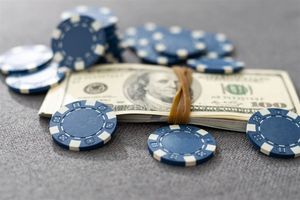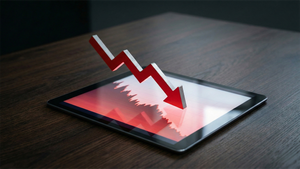The one-two punch of inflation at a 40-year high, plus predictions of a recession looming on the horizon, might be firing off the savings alarms. The conundrum? While it's in your best interests to stash some cash for emergencies, it feels much harder with the ballooning costs of pretty much everything.
And because of these increased costs, it might be a good idea to update your emergency savings. Let's look at whether you'll need to give your emergency savings a shake-up during inflationary times, and how to go about it, from myFICO:
For more loan and credit education, visit myFICO’s blog at https://www.myfico.com/credit-education/blog
Calculate your monthly basic living expenses
And while the general advice of tucking away anywhere from three to six months of your basic living expenses can still apply, that amount might have increased. So if your monthly grocery bill used to be $400, and now it's closer to $500, your budget will need some tweaking.
Go through the most recent credit card and bank statements to figure out how much you've been spending on food, clothing, entertainment. If it's changed from, say, six months ago, you'll want to bump up your emergency savings goal to reflect that. For instance, instead of having a savings goal of $15,000, you might want to shoot for $18,000.
Bolster your savings for emergencies with a higher price tag
Another reason for increasing your emergency savings goal? With the cost of pretty much everything going up, unexpected expenses such as car repairs, an urgent medical procedure, or a leaky roof will also cost more.
According to the Census Bureau's June 2022 Consumer Price Index (CPI), the cost of medical care services saw a 4.8% year-over-year increase between June 2021 and June 2022. Gasoline saw a whopping 60.6% 12-month rise, while transportation services saw an 8.8% bump. And overall, inflation as of July 2022 is at 9.1%.
Employ savings tactics
How can you tackle the beast of squirreling away funds for a rainy day? Start by challenging yourself by cutting back on expenses. It might feel overwhelming to try to cut back on everything. Instead, focus on one spending category, such as food or transportation or streaming subscriptions.
For example, to save on transportation, see if you can group errands in the same area to save on fuel prices. Or, commit to taking mass transit once a week instead of driving. Or, dust off your bike in the garage and take it to run errands.
Want to cut back on utility bills? Be sure to shut off the power when you leave a room in your house, or remove power cords from the outlet entirely. This will help you save on energy costs.
Think up ways to earn more
Besides drumming up ways you can put money back into your pocket, think of ways you can boost your cash flow. You don't have to undergo a career change or get a promotion — and significant raise to accomplish this.
If you're not keen on investing a lot of time, energy, or money into a side hustle, go for gigs that don't require a lot of resources to get started. You might be able to shore up a few hundred dollars a month by selling unwanted wares, selling fruit from your backyard orchard, or picking up some hours dog walking or delivering groceries.
If you're keen on making a passion project into a side business, you can kick off your endeavors by opening an Etsy, Ko-Fi or Society6 account. Or offer services on a platform such as Thumbtack or TaskRabbit. As this route requires more wherewithal, consider a budget for your side hustle.
Look into earning more on your savings
With interest rates increasing, you might earn more on interest by parking your money into a high-yield savings account or a certificate of deposit (CD). While both are low-risk savings vehicles, you'll need to lock your money into a CD for a set period of time. A high-yield savings account, on the other hand, enables you to freely withdraw funds as needed.
Another option might be to invest in an iBond. The current interest rate on Series I bonds is 9.62%, which is available until October 2022. The catch with iBonds is that you can't touch that money for a year. If you decide to withdraw your funds before you hit the five-year mark, you'll lose three months in interest.
Do your homework to see how much more you can earn, and which might be a better fit with your short- and long-term goals.
While inflation might mean ramping up savings efforts to sock away extra money for emergencies, there are some easy ways you can either save more, earn more — and more on those savings.
About myFICO
myFICO makes it easy to understand your credit with FICO® Scores, credit reports and alerts from all 3 bureaus. myFICO is the consumer division of FICO– get your FICO Scores from the people that make the FICO Scores. For more information, visit https://www.myfico.com/
View source version on businesswire.com: https://www.businesswire.com/news/home/20220816005121/en/
Contacts
myFICO Contact:
Elizabeth Warren
ElizabethWarren@fico.com





